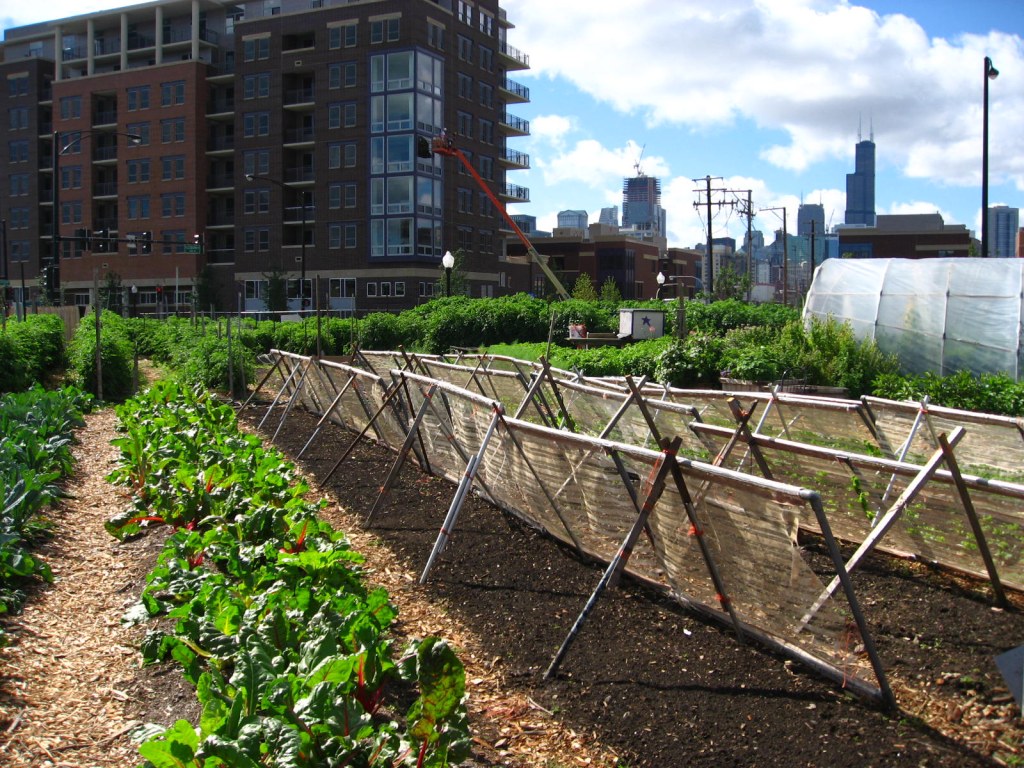Unlock Your Green Thumb With Urban Gardening Wikipedia – Unleash The Power Of Sustainable Living!
Urban Gardening Wikipedia: A Comprehensive Guide to Greening Your City
Introduction
Dear Readers,
1 Picture Gallery: Unlock Your Green Thumb With Urban Gardening Wikipedia – Unleash The Power Of Sustainable Living!

Welcome to our comprehensive guide on urban gardening, a practice that has become increasingly popular in recent years. In this article, we will explore the concept of urban gardening, its origins, benefits, and how you can get started. Whether you’re an aspiring gardener or simply curious about sustainable living, this guide will provide you with all the information you need to know about urban gardening.

Image Source: wikimedia.org
Let’s dive in and discover the wonders of urban gardening!
What is Urban Gardening?
🌱 Urban gardening refers to the practice of growing plants and cultivating gardens in urban areas. It involves using whatever space is available, such as rooftops, balconies, community gardens, and even abandoned lots, to create green spaces in cities. Urban gardening can range from small individual plots to large communal gardens, all aimed at bringing nature back into the concrete jungle.
🌇 The concept of urban gardening has gained immense popularity in recent years due to its numerous benefits, such as improving air quality, providing fresh produce, and fostering community engagement. Let’s take a closer look at the different aspects of urban gardening.
The Origins of Urban Gardening
The practice of urban gardening can be traced back to ancient civilizations, where people cultivated plants in city centers for food and medicinal purposes. However, as cities expanded and industrialization took over, green spaces became scarce. It was not until the late 19th century that urban gardening experienced a resurgence, with the establishment of community gardens in cities like Detroit and New York.
🌍 Today, urban gardening has become a global movement, with individuals and communities around the world recognizing its potential to transform cities into vibrant, sustainable, and healthier places to live.
The Who’s Who of Urban Gardening
🌿 Urban gardening is for anyone who is passionate about nature, sustainability, and community. It is not limited to professional gardeners or homeowners with large yards – anyone can participate, regardless of their experience or space constraints. From city dwellers with tiny balconies to community organizations reclaiming vacant lots, urban gardening transcends age, gender, and social backgrounds.
👥 Many cities have also seen the rise of urban gardening collectives and organizations that promote and support community gardens. These groups provide resources, education, and a sense of camaraderie among urban gardeners. The collective effort of individuals and communities is what makes urban gardening thrive.
When to Start Urban Gardening
🌷 Urban gardening can be pursued throughout the year, depending on the climate and the type of plants you wish to grow. In regions with mild winters, gardening activities can continue year-round. However, in colder climates, it may be necessary to adapt your gardening practices during the winter months or focus on indoor gardening.
🌞 Spring and summer are ideal seasons for starting an urban garden, as the warmer weather and longer days provide optimal growing conditions. However, with the right techniques and equipment, you can enjoy the benefits of urban gardening no matter the time of year.
Where to Practice Urban Gardening
🏙 Urban gardening can be practiced in various settings, depending on the available space and resources. Here are some common locations where urban gardening thrives:
1. Rooftop Gardens: Utilizing rooftops for gardening not only maximizes space but also helps insulate buildings and reduce energy consumption.
2. Balcony Gardens: Even the smallest balconies can be transformed into green oases, allowing urban dwellers to enjoy the beauty and freshness of plants.
3. Community Gardens: These shared spaces bring together individuals and families who want to grow their own food and foster a sense of community.
4. Vertical Gardens: Perfect for areas with limited horizontal space, vertical gardens use walls and structures to create stunning green displays.
5. Indoor Gardens: When outdoor space is not an option, indoor gardens offer a way to bring nature indoors and grow plants year-round.
Remember, the key to successful urban gardening is adapting to your specific environment and making the most of the space you have.
Why Choose Urban Gardening?
🌿 The benefits of urban gardening are multifaceted:
1. Environmental Benefits: Urban gardens help combat air pollution, reduce the urban heat island effect, and promote biodiversity in cities.
2. Food Security: By growing your own food, you can reduce your reliance on the industrial food system and have access to fresh, organic produce.
3. Health and Well-being: Gardening is a therapeutic activity that promotes physical exercise, reduces stress, and enhances mental well-being.
4. Community Building: Urban gardens bring people together, fostering a sense of community, and promoting social interactions.
5. Educational Opportunities: Urban gardening provides a platform for learning about plants, ecosystems, and sustainable practices, making it an ideal educational tool for all ages.
By choosing urban gardening, you contribute to a greener, healthier, and more sustainable future for both yourself and your community.
How to Start Urban Gardening?
🌱 Starting an urban garden requires careful planning and consideration. Here are some steps to get you started:
1. Assess Your Space: Determine the available space and the amount of sunlight it receives to choose suitable plants.
2. Choose the Right Plants: Select plants that are well-suited to your climate, space constraints, and gardening experience.
3. Prepare the Soil: Whether you’re gardening outdoors or indoors, ensure your plants have access to nutrient-rich soil.
4. Provide Adequate Watering: Establish a watering routine that meets the needs of your plants and prevents under or overwatering.
5. Start Small: Begin with a few plants or herbs and gradually expand your garden as you gain confidence and experience.
6. Seek Knowledge: Educate yourself about urban gardening techniques, pest control, and plant care through books, online resources, and local workshops.
7. Join a Community: Connect with other urban gardeners in your area to exchange tips, resources, and support.
By following these steps, you’ll be well on your way to creating your own urban oasis.
Advantages and Disadvantages of Urban Gardening
👍 Advantages:
1. Access to Fresh and Organic Produce: Urban gardening allows you to enjoy the taste and nutritional benefits of freshly grown fruits, vegetables, and herbs.
2. Improved Air Quality: Plants act as natural air purifiers, improving the air quality in urban areas and reducing the impact of pollution.
3. Increased Biodiversity: Urban gardens provide habitats for birds, bees, butterflies, and other wildlife, contributing to urban biodiversity.
4. Community Engagement: Community gardens promote social connections, cooperation, and a sense of belonging among participants.
5. Beautification of Urban Spaces: Urban gardens enhance the aesthetic appeal of cities, making them more visually appealing and inviting.
👎 Disadvantages:
1. Limited Space: Urban gardening often requires creative approaches to utilize limited space effectively.
2. Potential Challenges: Urban gardens may face limitations in terms of sunlight availability, soil quality, and access to water sources.
3. Time and Effort: Gardening requires consistent care and maintenance, which can be time-consuming, particularly for beginners.
4. Pest and Disease Management: Urban gardens may be more susceptible to pests and diseases, requiring vigilance and proactive management.
5. Community Dynamics: Conflicts or disagreements within community gardens can arise, requiring effective communication and conflict resolution.
Frequently Asked Questions (FAQ)
Q1: Can I start an urban garden if I live in an apartment?
A1: Absolutely! Even small apartments can accommodate balcony gardens or indoor gardens using containers and vertical gardening techniques. With a little creativity, you can bring the joy of gardening into your urban living space.
Q2: Do I need any special knowledge or experience to start urban gardening?
A2: Not at all! Urban gardening is for everyone, regardless of their gardening experience. There are numerous resources available, including books, online tutorials, and local workshops, to guide you through the process and help you develop the necessary skills.
Q3: How much time do I need to dedicate to urban gardening?
A3: The time commitment for urban gardening varies depending on the size of your garden and the plants you choose. However, even a few hours per week can yield satisfying results. As you gain experience and establish routines, you’ll find that urban gardening becomes a rewarding part of your daily life.
Q4: Can urban gardening be done sustainably?
A4: Absolutely! Urban gardening is inherently sustainable, as it promotes the use of organic practices and reduces the need for transportation and storage of produce. By utilizing composting, water conservation methods, and natural pest control, you can further enhance the sustainability of your urban garden.
Q5: How can I get involved in community gardening?
A5: To get involved in community gardening, reach out to local organizations, community centers, or online forums dedicated to urban gardening. They will guide you through the process of joining or starting a community garden, where you can collaborate with like-minded individuals and contribute to the well-being of your community.
Conclusion
🌻 Urban gardening offers a multitude of benefits for individuals, communities, and the environment. By transforming urban spaces into green havens, we can reconnect with nature and cultivate a sense of responsibility towards our planet.
🌿 As you embark on your urban gardening journey, remember to start small, seek knowledge, and embrace the challenges and joys that come with nurturing a garden. Whether you’re growing your own food, creating a peaceful sanctuary, or simply adding a touch of green to your surroundings, urban gardening provides endless possibilities for sustainable living in the concrete jungle.
Final Remarks
Dear Friends,
Thank you for joining us on this exploration of urban gardening. We hope this guide has inspired you to embark on your own green journey and discover the joy and rewards of urban gardening.
Remember, every small step towards greening our cities makes a difference. By cultivating green spaces, we not only improve our own well-being but also contribute to the overall health and sustainability of our communities.
Happy gardening!
This post topic: Gardens


